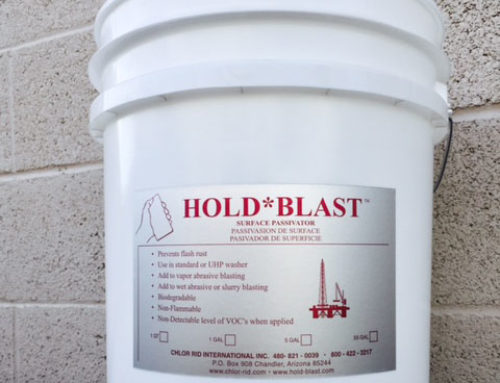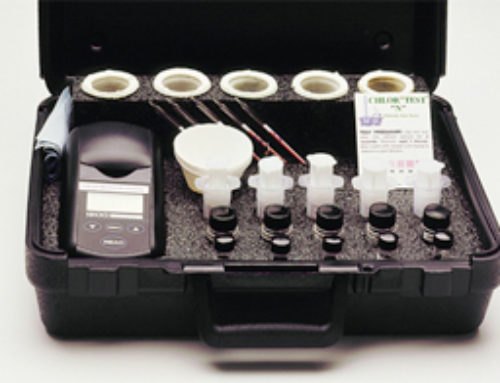[cs_content][cs_section parallax=”false” separator_top_type=”none” separator_top_height=”50px” separator_top_angle_point=”50″ separator_bottom_type=”none” separator_bottom_height=”50px” separator_bottom_angle_point=”50″ style=”margin: 0px;padding: 10px 0px;”][cs_row inner_container=”true” marginless_columns=”false” style=”margin: 0px auto;padding: 0px;”][cs_column fade=”true” fade_animation=”in” fade_animation_offset=”45px” fade_duration=”750″ type=”1/2″ class=”cs-ta-center” style=”padding: 0px;”][x_custom_headline level=”h1″ looks_like=”h3″ accent=”true” class=”cs-ta-center”]CHLOR-RID[/x_custom_headline][cs_text class=”cs-ta-left”]
CHLOR*RID can satisfy your most aggressive requirements – simply, safely and economically. It is effective on most surfaces, including steel, foam, concrete, and plastics.
CHLOR*RID has been used by private industry, for federal and state highway coating and cleaning projects, to wash concrete dams, tanks, bridges, and machinery, even in a microbiological lab.
When your specification requirements requires consistent, safe and reliable removal of soluble salt contamination, use CHLOR*RID.

Soluble salts, like chlorides, sulfates and nitrates, are found on surfaces everywhere. These soluble salts pull moisture from the air, causing protective coatings to fail. They can also be the cause of degradation of the substrate. Left unchecked, the salt contamination can corrode into deep pockets, making decontamination even more important and challenging. Lost productivity from protective coating failures is costly and can be hazardous.
Alternative methods are not as cost effective. Abrasive blasting often requires repeated blasting. Some abrasives contain salts and actually deposit trace amounts of soluble salts on the surfaces. Other methods require heat or use of hazardous chemicals. Some methods may leave residues that interfere with the adhesion of the protective coating, thus contributing to coating failure.
[/cs_text][/cs_column][cs_column fade=”false” fade_animation=”in” fade_animation_offset=”45px” fade_duration=”750″ type=”1/2″ class=”cs-ta-center” style=”padding: 0px;”][x_image type=”none” src=”https://bwdist.com/wp-content/uploads/2017/08/CHLOR-RID.jpg” alt=”CHLOR-RID SOLUBLE SALTS WASH” link=”false” href=”#” title=”” target=”” info=”none” info_place=”top” info_trigger=”hover” info_content=””][/cs_column][/cs_row][/cs_section][cs_section parallax=”false” separator_top_type=”none” separator_top_height=”50px” separator_top_angle_point=”50″ separator_bottom_type=”none” separator_bottom_height=”50px” separator_bottom_angle_point=”50″ style=”margin: 0px;padding: 45px 0px;”][cs_row inner_container=”true” marginless_columns=”false” style=”margin: 0px auto;padding: 0px;”][cs_column fade=”false” fade_animation=”in” fade_animation_offset=”45px” fade_duration=”750″ type=”1/1″ style=”padding: 0px;”][cs_text class=”cs-ta-center” style=”font-size:16px;”]Click below for the individual data sheet:[/cs_text][x_button size=”global” block=”true” circle=”false” icon_only=”false” href=”https://bwdist.com/wp-content/uploads/2017/08/Chlor-Rid-Data-Sheet-1.pdf” title=”” target=”blank” info=”popover” info_place=”top” info_trigger=”hover” info_content=”Click to Download or View Data Sheet”][x_icon type=”download” class=”mvn mln mrs”]CHLOR-RID Data Sheet[/x_button][x_button size=”global” block=”true” circle=”false” icon_only=”false” href=”https://bwdist.com/wp-content/uploads/2017/08/chlorrid-Directions-1.pdf” title=”” target=”blank” info=”popover” info_place=”top” info_trigger=”hover” info_content=”Click to Download or View Data Sheet”][x_icon type=”download” class=”mvn mln mrs”]CHLOR-RID Instructions[/x_button][/cs_column][cs_column fade=”false” fade_animation=”in” fade_animation_offset=”45px” fade_duration=”750″ type=”1/1″ style=”padding-top: 20px;”][x_prompt type=”left” title=”Need Help?” message=”<strong>Questions?</strong> Call us for technical support, product information or help with any questions.” button_text=”480.924.8883″ button_icon=”phone” circle=”false” href=”tel:+14809248883″ href_title=”Call B&W Distributors” target=””][/cs_column][/cs_row][/cs_section][cs_section parallax=”false” separator_top_type=”none” separator_top_height=”50px” separator_top_angle_point=”50″ separator_bottom_type=”none” separator_bottom_height=”50px” separator_bottom_angle_point=”50″ style=”margin: 0px;padding: 45px 0px;”][cs_row inner_container=”true” marginless_columns=”false” style=”margin: 0px auto;padding: 0px;”][cs_column fade=”false” fade_animation=”in” fade_animation_offset=”45px” fade_duration=”750″ type=”1/1″ style=”padding: 0px;”][x_tab_nav type=”three-up” float=”top”][x_tab_nav_item title=”RECOMMENDED USES” active=”false”][x_tab_nav_item title=”UNIT SIZES AVAILABLE” active=”true”][x_tab_nav_item title=”FAQs” active=”false”][/x_tab_nav][x_tabs][x_tab active=”false”]
The protective coating industry and corrosion engineers are now more aware of the
damage soluble salt contaminants cause than ever before.
Recommended for use on:
- Bridge Structures
- Ships
- Mining Facilities
- Storage Tanks
- Public Utilities
- Electronics
- Offshore Drilling Rigs
- Marine Structures
- Process Equipment
- Pulp and Paper Mills
- Power Generation Plants
- Natural Gas Facilities
- Saw Mills
- Petrochemical Installations
- Piping
- Cooling Towers
- Railcars
- Aircraft
- and More
[/x_tab][x_tab active=”true”]CHLOR-RID is available in any quantity starting at 1 gallon and custom ordering is available.
1 Gallon
5 Gallon
55 Gallon Drum
160 Gallons
on up to totes, tankers, etc…[/x_tab][x_tab active=”false”]
FREQUENTLY ASKED QUESTIONS
1. What is soluble salt contamination?
Soluble salts, like chlorides, sulfates and nitrates are found on surfaces everywhere – in marine environments or as residue left by chemical compounds, like de-icing salts or industrial emissions. Soluble salts pull moisture from the air, causing protective coatings to fail. They can also cause degradation of the substrate, including ferrous and non-ferrous metals, concrete, foam, plastics and others. Left unchecked, the salt contamination corrodes into deep pockets in the substrate, making decontamination more important and challenging. Protective coating failures are costly due to repair and lost productivity, and can be hazardous.
2. What does CHLOR*RID do?
Removing soluble salts from surfaces prior to applying a protective coating is obviously desirable and important. CHLOR*RID is the easiest, safest and most economical method available for removing soluble salts. CHLOR*RID is added to water and applied to the contaminated surface. The chemicals in the CHLOR*RID solution bond with chloride and sulfate ions, etc removing them from the surface. Then protective coatings can be applied.
3. How safe is CHLOR*RID?
CHLOR*RID is safe to use and does not pose any health risk when used according to the manufacturer’s directions. NSF International has concluded that CHLOR*RID does not pose a health concern and does not require certification for use. CHLOR*RID has been approved for use in Canada, passing a high standard of environmental testing.
4. Why is CHLOR*RID better than other methods for removing soluble salt contamination?
There are several methods for removing soluble salts, but CHLOR*RID is superior. Abrasive blasting often requires repeated blasting. Some abrasives contain salts and actually deposit trace amounts of soluble salts on surfaces. Other methods require heated, de-ionized water which is not available to most field operations, or use of hazardous chemicals – like phosphoric acid – which requires special handling and disposal. Some methods leave residue that interfere with the adhesion of the protective coating, thus contributing to coating failure. CHLOR*RID is used with any potable water source. Performance is enhanced by using heated water, but is not necessary for the solution to be effective. CHLOR*RID should not be rinsed after use and is biodegradable, non-flammable and contains no volatile organic compounds.
5. Since CHLOR*RID doesn’t get rinsed off, will it compromise the adhesion of the protective coating?
No. Wasser High-Tech Coating, Tnemec Company and Advanced Polymer Sciences, Inc., have tested CHLOR*RID with their coatings and found that it does not interfere with the adhesion of their coatings. Scanning Electron Microscopy (SEM) inspection by KTA Tator Laboratoriesestablished that CHLOR*RID leaves no film or residue after use.
6. How economical is CHLOR*RID?
Manufacturer’s recommendation is one U.S. gallon of CHLOR*RID for every 300-1000 square feet of surface area, depending on contamination level. Increased dilution has proven effective in both laboratory tests and field applications. When specifications require removal of soluble salts, CHLOR*RID is the cost economical solution.
7. Who uses CHLOR*RID?
CHLOR*RID has been used by private industry, for federal and state highway coating and cleaning projects, to wash concrete dams, tanks, bridges and machinery – even to remove and mitigate contaminants in a microbiological state lab. CHLOR*RID has been included in the specifications for projects where consistent, safe and reliable removal of soluble salt contamination is required.[/x_tab][/x_tabs][x_video_embed no_container=”false” type=”16:9″][/x_video_embed][/cs_column][/cs_row][/cs_section][/cs_content]





